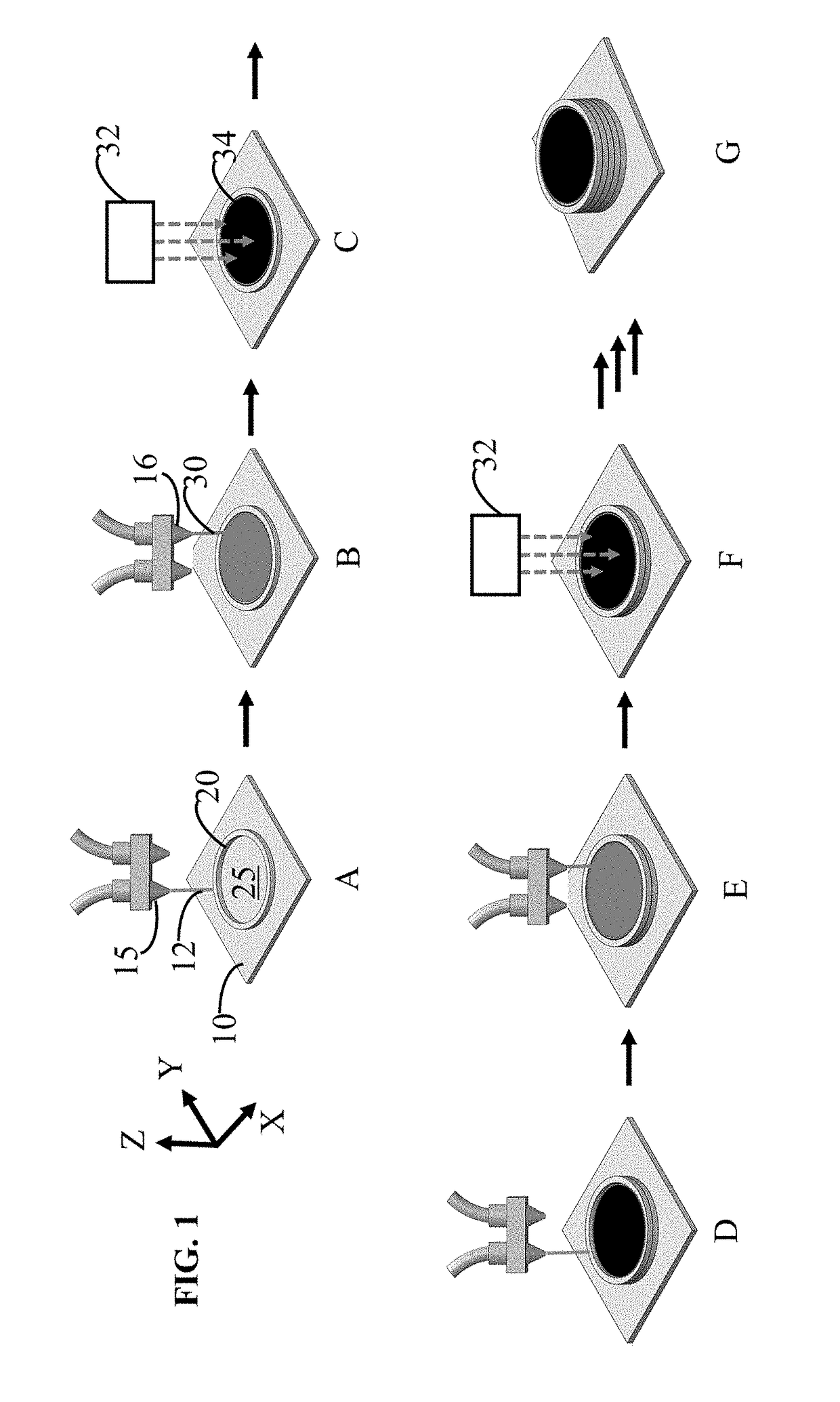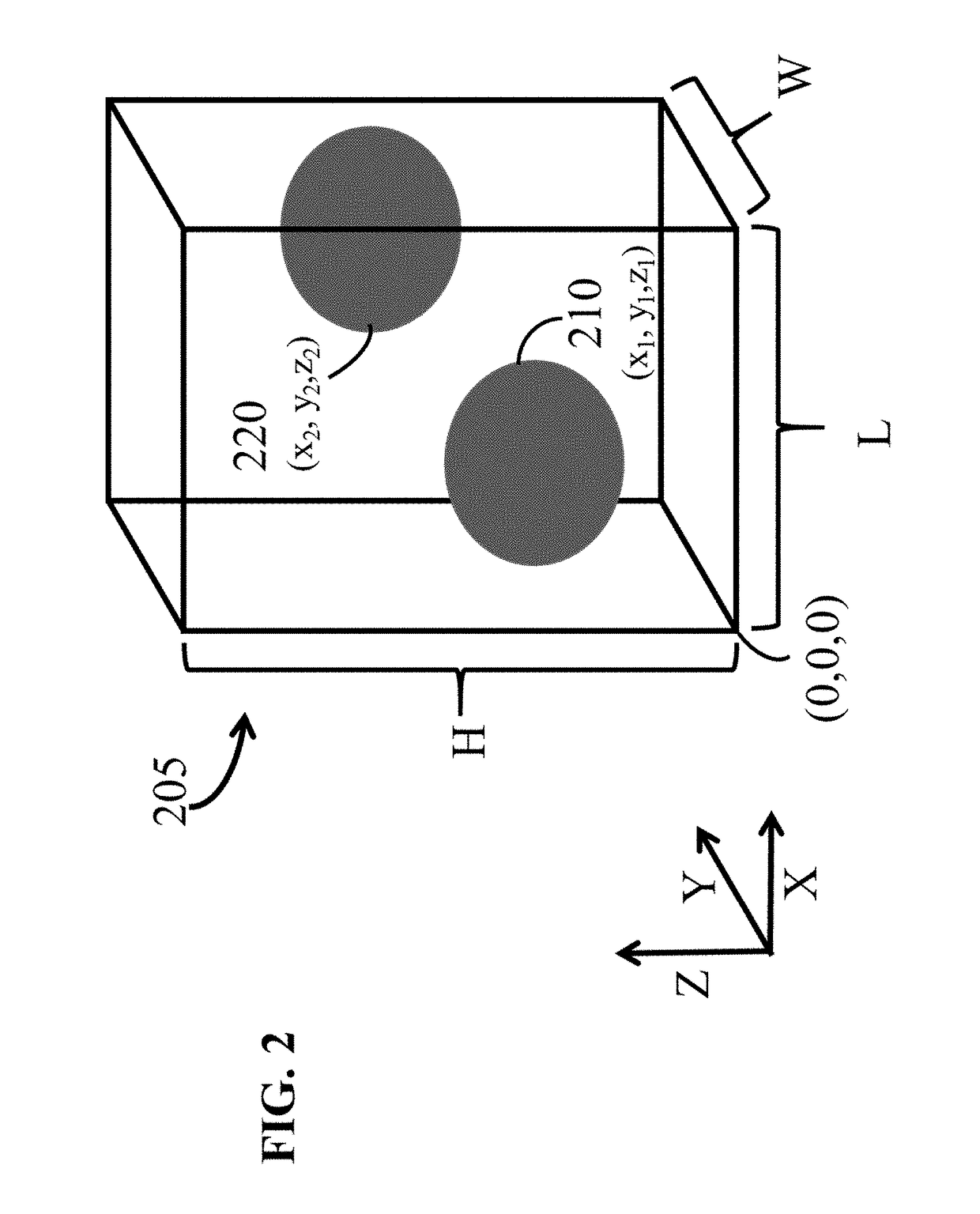3D printer and method for printing an object using a curable liquid
a curable liquid and 3d printing technology, applied in the field of additive manufacturing, can solve the problems of difficult or impossible use of materials as the print feedstock for 3d printing using current 3d printing technology, difficult 3d printing using low viscosity materials or using high viscosity materials, and general restriction of 3d printing of parts using low viscosity liquids, etc., to achieve the effect of high toughness and under the melting point of the binder
- Summary
- Abstract
- Description
- Claims
- Application Information
AI Technical Summary
Benefits of technology
Problems solved by technology
Method used
Image
Examples
embodiments
[0064]Using the equipment, methods and systems described herein, a curable liquid can be used for making parts. The liquid material can be cured or partially cured during 3D printing of the part. For example, 3D printers and methods are described that can be used for printing using liquids of low, medium and high viscosities. For example, 3D printers are described that can be used for printing using two part epoxies, food pastes, high viscosity silicones and pastes including metal particles.
[0065]FIG. 1 is a pictorial flow diagram showing an embodiment of a method for printing a part. The method includes: step A, print a container; step B, infill the container; step C, cure the infill; step D, increase the container size; step E, add additional infill; step F, cure the additional infill; and step G, repeat steps D-F until desired part is made. Details for these steps are outlined below.
[0066]Step A is to print a container. The container is a portion of the final part to be printed. ...
example 1
[0145]Computer Aided Design was used to design the model shown in FIG. 14A as an isometric projection and 14B as a front cross cut view. The model is for a part having a diameter of 5 cm and a height of 2 cm. The model also featured a hole in the center with a diameter of 2 cm and depth of 1.5 cm. Slicing program Simplfy3D was then used to produce G-code that could be used to print a part based on the model using a Flashforge 3D printer (Flashforge, USA) and red ABS filament
[0146]The conditions for printing were:
[0147]Extruder: Nozzle diameter 0.4 mm; Retraction distance 1.00 mm; Retraction speed 1200 mm / min;
[0148]Layers: Primary layer height 0.2 mm; Top solid layers 3; Bottom solid layers 3; Outline / perimeter shells 2; Outline Direction inside out; First layer height 90%; First layer width 100%; First layer speed 50%; Start point optimize start points for fastest printing speed
[0149]Additions: Use skirt / Brim; Skirt layers 1; Start offset from part 4 mm; Skirt outlines 2; Use raft l...
example 2
[0154]FIG. 16 shows a part that can be made by the methods described herein. The part consists of negative stiffness honey comb 1610 that has one row 1620 filled with polydicylcopentadiene (p-DCPD). The honeycomb is made by 3D printing of ABS under conditions similar to those in example 1. The p-DCPD is made by mixing dicyclopentadiene (DCPD) at >40 degree Celsius and ROMP catalyst ((1,3-Bis(2,4,6-trimethylphenyl)-2-imidazolidinylidene)dichloro(phenylmethylene)(tricyclohexylphosphine)ruthenium, Aldrich Cat no 569747), in a ratio of 6.8 mg catalyst to 50 mL DCPD. Iterations of printing honeycomb and filling with DCPD+catalyst can produce the part.
PUM
| Property | Measurement | Unit |
|---|---|---|
| Volume | aaaaa | aaaaa |
| Shape | aaaaa | aaaaa |
| Energy | aaaaa | aaaaa |
Abstract
Description
Claims
Application Information
 Login to View More
Login to View More - R&D
- Intellectual Property
- Life Sciences
- Materials
- Tech Scout
- Unparalleled Data Quality
- Higher Quality Content
- 60% Fewer Hallucinations
Browse by: Latest US Patents, China's latest patents, Technical Efficacy Thesaurus, Application Domain, Technology Topic, Popular Technical Reports.
© 2025 PatSnap. All rights reserved.Legal|Privacy policy|Modern Slavery Act Transparency Statement|Sitemap|About US| Contact US: help@patsnap.com



